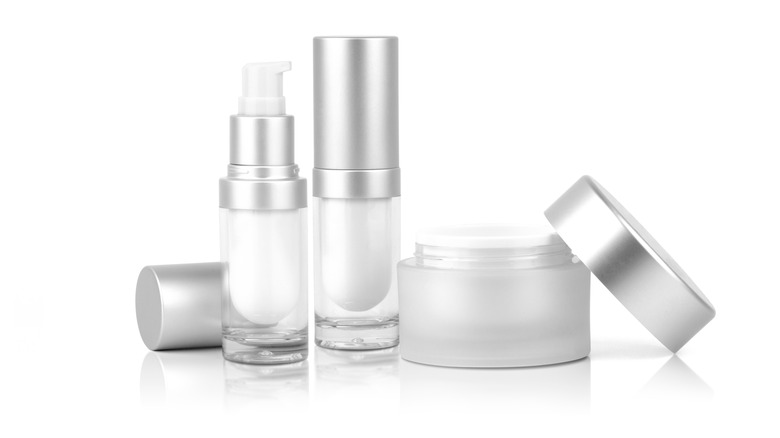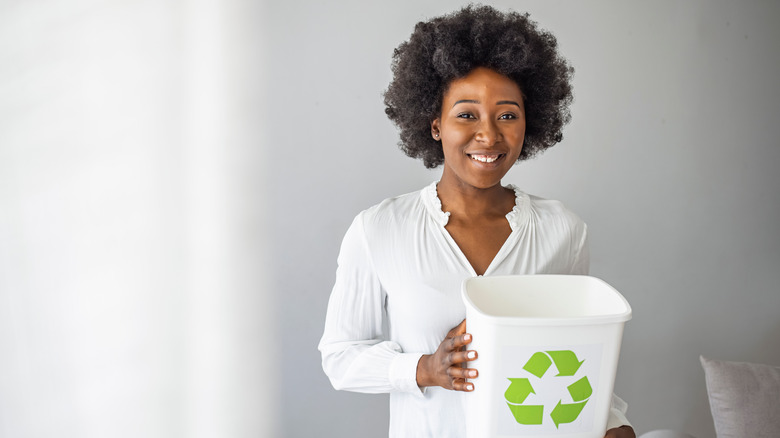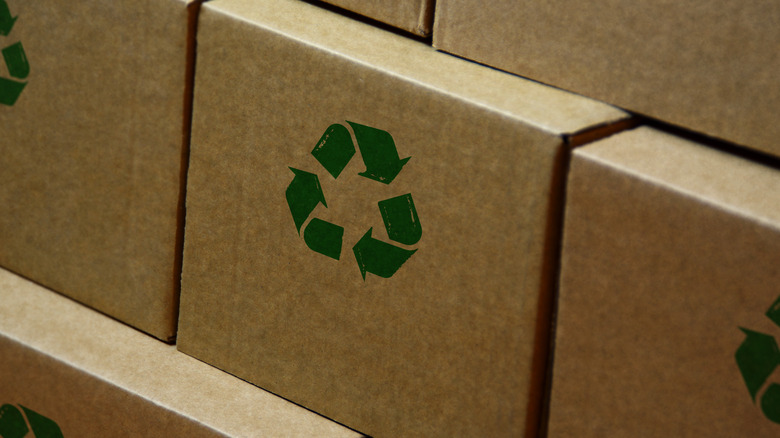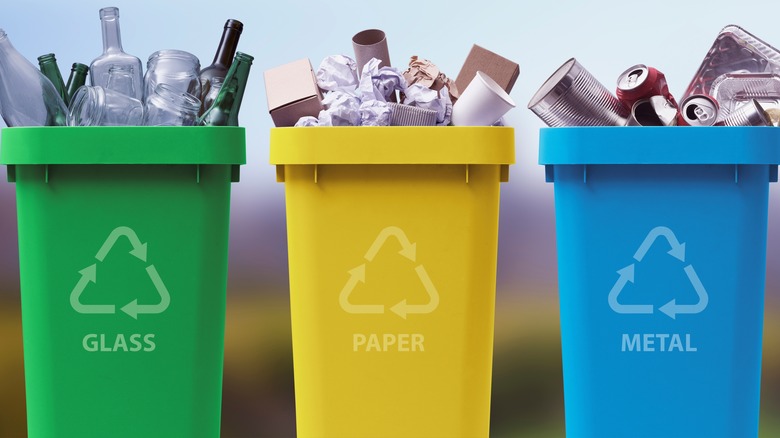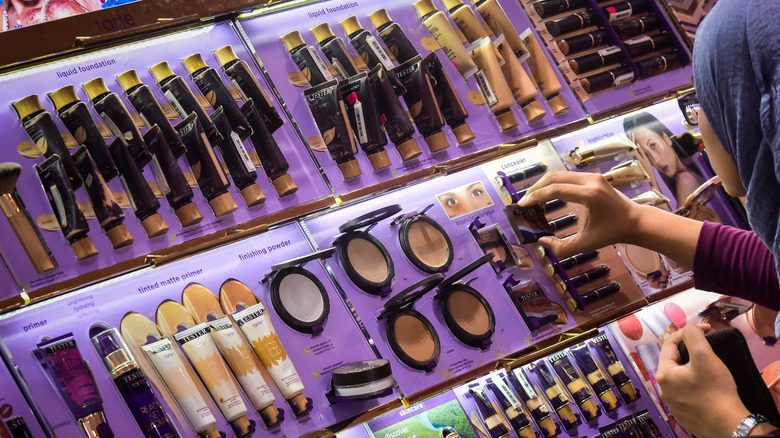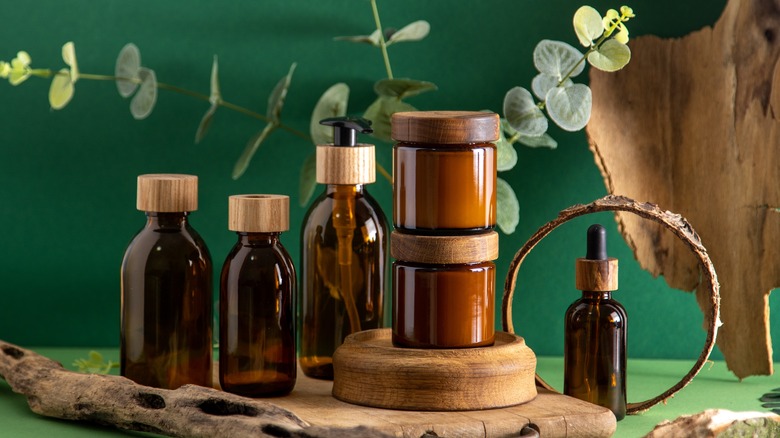The Best Ways To Recycle Your Empty Beauty Products
We may receive a commission on purchases made from links.
The ugly side of the beauty industry is that it rarely goes hand in hand with sustainability. Unbeknownst to many, the beauty sector produces up to 120 billion plastic packaging units annually, according to Green Business Bureau. This contributes to the yearly loss of 18 million acres of forest.
Many cosmetics are packaged in polythene bags and plastic containers, which are non-biodegradable. Once they're dumped in a landfill, the toxic chemicals in those containers will pollute soil, clog waterways, and cause ecological imbalances. According to Statista, so far in 2022, the beauty and personal care sector generated about $85.06 billion in revenue in the U.S. alone. And the market is projected to grow by 3.93% per year. Imagine the volume of non-biodegradable packaging that may end up in a landfill and the damage it will do to the environment.
If you care about the planet as much as you do about your favorite beauty products, now is the time to shape up and ship out all of your empty containers in the most sustainable fashion. Below are some tips to help you figure out what can be recycled and what should go into the bin.
Keep a recycling bin on hand
If you want to change the environment, start by having a recycling bin on hand to gather items that might have otherwise ended up in landfills (via Conserve Energy Future). Consider keeping the bin in your bathroom where you store most of your personal care products, like shampoo, body wash, face wash, and cosmetics. Having a conveniently located place to toss your recyclables speeds up your trash-sorting process when you are ready to take them to recycling centers.
Once your recycling bin has been filled, your neighborhood government agency or a recycling business can come to pick the items up and reprocess them to create new materials. According to Stanford University, this process of reusing resources like aluminum, paper, glass, and plastics has many environmental benefits. It minimizes manufacturing and energy costs, and reduces the damaging effects that processing and extracting virgin materials has on the environment.
If you can make using a recycling bin a habit, this planet will become a much better place.
Learn what recycling symbols mean
To know more about the recyclability of your bathroom products, it's a good idea to familiarize yourself with recycling symbols. The most common ones you'll find on your product labels are the PET logos, the Möbius strip, the recyclable glass logo, the recyclable aluminum logo, and the plastic resin codes (via Hamburger Recycling). However, recycling restrictions vary from city to city, and cosmetic packaging containers have complex materials that are difficult to be separated or processed by most municipal recycling centers. The widely seen Tidy Man logo used on packaging is not a recycling symbol. Its purpose is to warn customers not to litter and to be conscious of how they discard rubbish.
Most local curbside recycling programs accept products made of glass, aluminum, and No. 1 and No. 2 plastics, including those made of polyethylene terephthalate (PET) and high-density polyethylene (HDPE). If your cosmetic containers are packaged in cellophane, which can't be recycled, you should discard them in your normal trash bin. To know what recyclables are accepted at centers, you can look up recycling information on your local municipality's website or on the Call2Recycle website and Earth911.
Know your non-recyclables to avoid cross-contamination
Having and using a recycling bin is a great sustainable practice, but putting non-recyclable waste in it can cause irreversible damage. Stephen Clarke, of recycling company TerraCycle, tells Good Housekeeping that shampoo bottles and soap dispenser bottles are widely accepted for recycling, but items like caps or pumps, cardboard packaging, and aluminum aerosol cans are a no-no. Non-recyclable waste runs the risk of "contaminating entire truckloads of otherwise recyclable materials," Clarke says.
Some recycling labels will read "empty and replace cap," but if there's no label and you're not 100% sure about a product's recyclability, it's best to place it in a regular trash can, according to Paula's Choice Skincare. Many personal care items are packaged in cellophane, a thin sheet made of regenerated cellulose. Unfortunately, this can't be recycled and needs to go in your regular trash bin. Nail polish, perfume containers, makeup wipes, and makeup brushes also aren't recyclable and shouldn't be tossed into your recycling bin.
Check out recycling programs in your area
After sorting out materials for recycling, you can use a curbside collection service or drop-off programs in your area to recycle them. Many cosmetics companies also provide internal recycling programs in their stores, such as L'Occitane, Kiehl's, and M.A.C. Cosmetics. They work with the national recycling program TerraCycle to recycle any beauty products left with them. You can join the Free Recycling Programs offered by TerraCycle in which you mail your empty products directly to them.
As an added incentive for customers to recycle more frequently, L'Occitane will recycle bottles from any beauty brand in exchange for 10% off your next full-size product, and M.A.C Cosmetics, through its Back 2 M·A·C program, offers a free M.A.C. lipstick of your choice in exchange for six M.A.C. primary packaging containers. Paula's Choice, Herbal Essences, Zoya, and Josie Maran, are additional companies that offer in-house recycling. Before trading in your unwanted bottles, remember to remove any remaining product residue from them and give them a good rinse.
Prioritize sustainable packaging
The next time you purchase beauty products, consider buying from brands that promote sustainable practices. Using beauty products in eco-friendly containers helps preserve natural resources and allows fewer carbon emissions to be released into the environment (via Petro Packaging). Bamboo, silicone, glass, metal, cornstarch, and biodegradable paperboard are sustainable choices for cosmetics packaging because they can be recycled and require less energy to produce. Neighborhood Botanicals, Everist, Common Heir, Inika, and Pacifica are among beauty brands that are implementing eco-friendly packaging strategies to reduce the damage of non-biodegradable waste to the environment, Insider reports.
As consumers, we can do our part to affect long-term positive environmental changes by making recycling a habit and prioritizing sustainability in our shopping behaviors. Before throwing anything into the trash can, make an effort to sort out what can be recycled. Ultimately, recycling decreases our demand for new materials, therefore preserving many of our valuable and limited resources.
